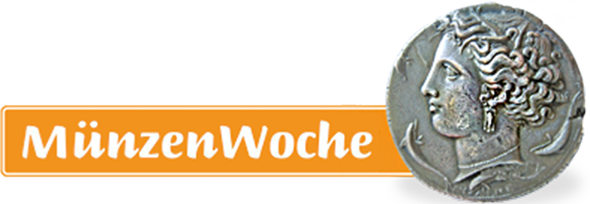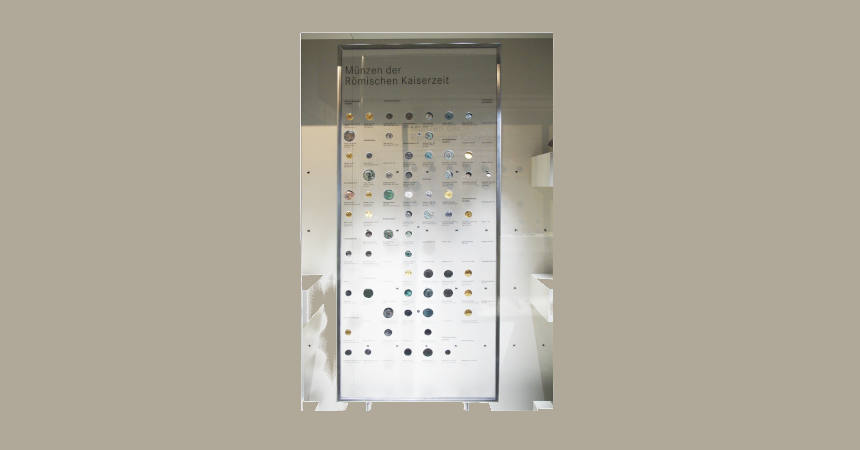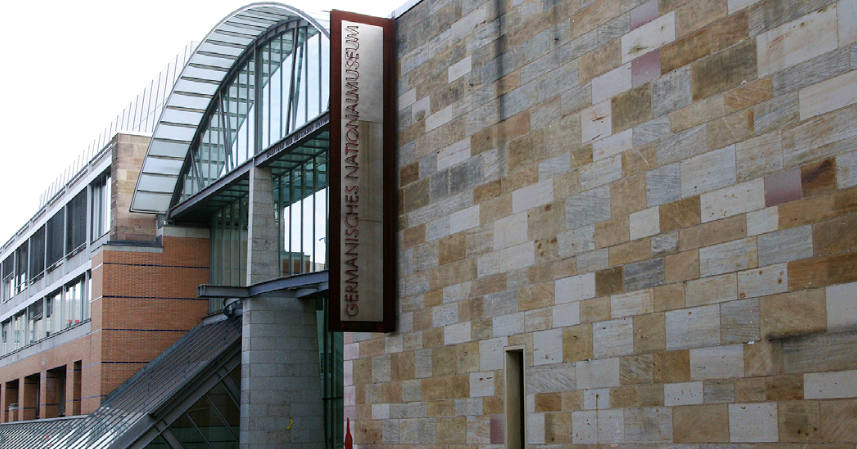Germanisches Nationalmuseum, Münzkabinett
Wenn es kein Logo gibt, wird diese Spalte einfach leer gelassen. Das Bild oben bitte löschen.
(Dieser Text wird nicht dargestellt.)
Kartäusergasse 1
90402 Nürnberg
Tel: +49 (0)911-1331-0
The Germanic National Museum is the largest museum of cultural history in Germany. Its Department of Coins and Medals (Münzkabinett ) comprises approximately 150,000 items made up of 100,000 coins, 15,000 notes and emergency notes, 20,000 medals, tokens and 5,000 characters, more than 6,000 seals and embossing dies as well as brands, counters, medals, order and decorations, and antique gems. A small fraction of these are exhibited in different rooms of the Museum, where they find themselves embedded in broader historical contexts with texts in both German and English. Other objects of the collection can be viewed in the Study Room by appointment.
Unlike most major numismatic collections, the Museum’s coin collection was not built on an old royal collection, but was first created with the establishment of the Museum in 1852. The focus of the collection lies in the German-speaking world and includes the time of the Carolingians (8th and 9th centuries) until the present.
Carolingian Art and Culture
Charlemagne, king of Franks since 768, introduced the denar as the standard coin for the whole empire. These coins bear his name and the city where they were minted. Examples on display in Room 4 are the silver denars of Charlemagne with multiple dates and mints (Milan, Bourges, and Paris), Louis the Pious (Paris, 814-840), Lothar I (Pavia, 840-855), Pippin I or II (Melle, 814-838 or 839-852), and Charles the Simple (Strasbourg, 898-923).
Coins of the Roman Iron Age
Roman coins minted since 216 BC include the silver denarius, bronze sestercius, and the copper as. While the denarius was initially based on pure silver, debasement lead to rampant inflation by 260 AD. Reforms by Diocletian (284-305) and Constantine (307-337) introduced a more stable gold standard.
In Room 8 is a display of 62 coins from the Roman Empire, beginning with the aureus of Augustus (27 BC-14 AD) and ending with the silver ½ siliqua of Severus III (461-465). Even though there were other emperors of the Western Empire that followed, no coins are given as examples. Coins are not provided for 31 of the Roman emperors cited that ruled between Augustus and Romulus Augustus (475-476).
Medallic Art and Badges
The Museum’s first level (2nd floor, American) has several rooms (104, 106, 107 115, 118, and 121) showcasing medallic art from as early as the 16th century. Albrecht Dürer portraits greatly influenced contemporary makers of medals and medallions, particularly those in Nuremberg. Room 118 has a selection of funerary portrait medals by artists such as Sebastian Dadler, Matthes Gebel, and Christoph Ritter.
After the introduction of the Reformation in many locations, the poor could no longer be supported by monasteries. Beggars had to sew a badge on their clothing and received tokens for which they exchanged for bread. Examples of this badge and tokens are in Room 107.
Weitere Informationen:
This text was written by Howard M. Berlin and first published in his book Numismatourist in 2014.
You can order his numismatic guidebook at Amazon
Howard M. Berlin has his own website.









